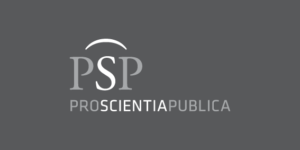The Relationship between Humans and Animals in the Aboriginal Mythology through the Prism of Animal Studies
DOI:
https://doi.org/10.15503/jecs2022.2.601.612Słowa kluczowe:
Animals, People, Aboriginal Mythology, Australia, MythsAbstrakt
Aim. The aim of this article is to analyse Aboriginal myths and discover the relationship between animals and humans in the beliefs of the indigenous Australians. The article attempts to explain how animals are described when compared to people and vice. Furthermore, the author endeavours to establish what the relationship looks like and how it is presented.
Methods. As Aboriginal myths and mythologies have been evolving for hundreds and thousands of years, it is not possible to analyse every single myth. Hence, in order to narrow them down, only the myths presented by Alexander Wyclif Reed will be analysed. The analysis will be conducted from the perspective of Animals Studies, with a particular focus on the contemporary ecological views presented by a contemporary representative of an ecological turn and animal rights scholar, Peter Wohlleben. The analysis will focus on three main aspects: parenting/motherly love, instincts, feelings and emotions.
Results. The analysis shows that animals were of the utmost importance in the Aboriginal everyday life and most of the time were treated on a par with humans. Just like the Aboriginal point of view, contemporary attitude to Animal Studies attempts to alter the view according to which animals are devoid of feelings and intelligence.
Conclusions. Animals seem to have a crucial role in every aspect of Aboriginal everyday life, including religious and social. They were not perceived as lesser or worse; conversely, Aboriginals considered them to be as intelligent and significant as the Aboriginal people themselves.
Pobrania
Bibliografia
Baldick, C. (2001). The Concise Oxford Dictionary of Literary Terms (2nd ed.). Oxford University Press.
Berndt, R. (1951). Kunapipi: A Study of an Australian Aboriginal Cult. University of Melbourne.
Capell, A. (1952). The Wailbri Through Their Own Eyes. Oceania, 23(2), p. 120.
Jordan, M. (2004). Dictionary of Gods and Goddesses (2nd ed.). Facts On File, Inc.
Kerridge, R. (2017, October 20). The Inner Life of Animals by Peter Wohlleben review – a revolution in how we regard other species. The Guardian. https://www.theguardian.com/books/2017/oct/20/inner-life-animals-peter-wohlleben-review
King, J. (2010). Great Moments in Australian History. Allen & Unwin.
Kingsland, S. E. (2018). Facts or Fairy Tales? Peter Wohlleben and the Hidden Life of Trees. The Bulletin of the Ecological Society of America, 99(4), pp. 1-5.
https://esajournals.onlinelibrary.wiley.com/doi/full/10.1002/bes2.1443
Klik, M. (2016). Teorie Mitu. Współczesne literaturoznawstwo francuskie (1969-2010) [The Theory of Myth. Contemporary French Literary Studies (1969-2010)]. Wydawnictwo Uniwersytetu Warszawskiego.
Meletinsky, E. (2014). The Poetics of Myth. Taylor & Francis.
Lindow, J. (2002). Norse Mythology: a guide to the gods, heroes, rituals, and beliefs. Oxford University Press.
Mudrooroo, N. (1994). Aboriginal Mythology. An A-Z Spanning the History of Aboriginal Mythology from the Earliest Legends to the Present Day. Aquarian.
Parandowski, J. (2004). Mitologia: Wierzenia i podania Greków i Rzymian [Mythology: Greek and Roman Myths and Legends]. Puls.
Reed, A. W. (1978). Aboriginal Myths. Tales of the Dreamtime. Reed New Holland.
Wohlleben. P. (2018). The Inner Life of Animals: Love, Grief, and Compassion: Surprisiprosng Observations of a Hidden World. Vintage House.
Pobrania
Opublikowane
Numer
Dział
Licencja
Prawa autorskie (c) 2022 Radosław Siewierski

Utwór dostępny jest na licencji Creative Commons Uznanie autorstwa 4.0 Międzynarodowe.
CC-BY
Authors retain copyright and grant the journal right of first publication with the work simultaneously licensed under a Creative Commons Attribution License that allows others to share the work with an acknowledgement of the work's authorship and initial publication in this journal. All authors agree for publishing their email adresses, affiliations and short bio statements with their articles during the submission process.


